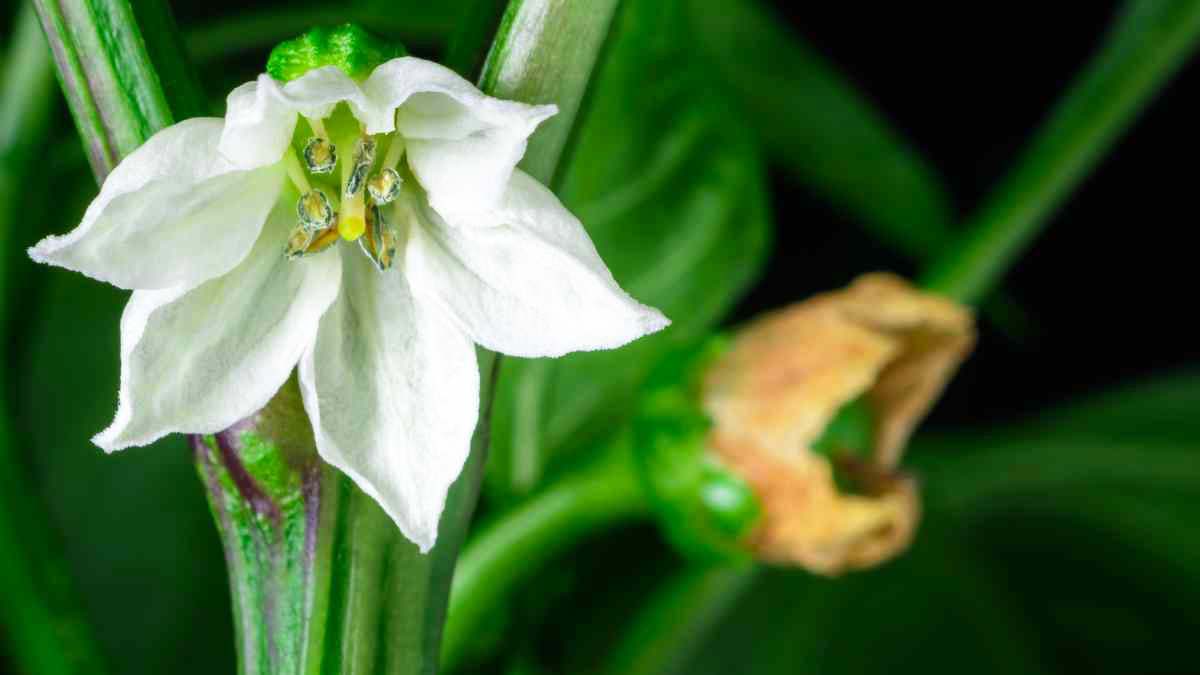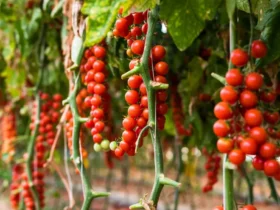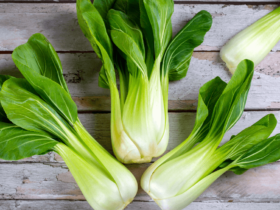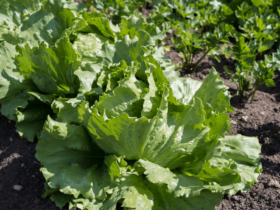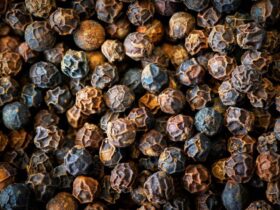Bell Peppers Growing Stages are: germination, seedling, vegetative, flowering, and fruiting. Each stage is critical for a healthy yield.
Growing bell peppers can be an enriching horticultural experience, requiring patience and attention to detail. Gardeners eagerly anticipate the journey from tiny seeds to vibrant, crisp vegetables on their plates. Understanding the growth process is essential for optimal care, ensuring that each bell pepper receives the required nutrients and environmental conditions necessary for development.
This knowledge not only helps to maximize the harvest but also ensures that the peppers are grown organically and sustainably. With diligent care and maintenance, the stages of bell pepper growth will unfold before you, leading to a bountiful and colorful addition to your garden or farm.
Sprouting Seeds
Sprouting seeds is the first exciting stage in growing bell peppers. During this phase, the tiny seeds awaken and begin their journey towards becoming vibrant bell pepper plants. Understanding the sprouting process is crucial for a bountiful harvest.
Prepping The Seeds
Proper preparation sets the foundation for seed sprouting success. Bell pepper seeds require a gentle touch and the right approach to maximize their germination potential.
- Dry seeds should come out of the storage.
- Inspect and choose the plump, unblemished seeds.
- Soak them for 8-10 hours to help break dormancy.
- After soaking, transfer seeds onto a damp paper towel.
- Place them in a warm, dark place to encourage sprouting.
Ideal Conditions For Germination
Bell pepper seeds flourish in a welcoming environment. Ensuring the right conditions can speed up the germination process.
| Condition | Ideal Setting |
| Temperature | 70-85°F (21-29°C) |
| Humidity | Around 60-70% |
| Light | Not required until sprouts appear |
| Soil | Moist, but not soaked |
Once sprouts emerge, move them to a light-filled spot. Here, they will continue their growth journey. A consistent check on moisture levels and temperature ensures seeds have the best chance for development.

Emergence Of Seedlings
Little bell pepper plants start their journey with the emergence of seedlings. This stage marks a new beginning for the plant. Within 7 to 10 days after sowing seeds, tiny sprouts break through the soil’s surface. These seedlings need plenty of warmth and light to grow strong. Gardeners should take special care during this phase to ensure the baby plants can flourish.
First True Leaves
After the initial leaves, known as cotyledons, appear, the first true leaves will start to develop. These leaves are a sign of growth and provide the energy the plant needs to continue its journey. When you spot these leaves, the bell pepper plant is ready to take on more sunlight and start photosynthesis.
Transplanting To Larger Pots
Once the seedlings have at least two sets of true leaves, they are ready for transplanting to larger pots. This move gives the roots room to spread and strengthen. Use a pot that is at least 8 inches in diameter to allow for adequate growth. Here’s a quick transplantation guide:
- Prepare the new pot with high-quality potting soil.
- Carefully remove the seedling from the current pot, keeping the root ball intact.
- Place the seedling in the new pot and gently cover with soil.
- Water the newly transplanted seedling well.
Make sure the new pot has adequate drainage to prevent waterlogging. Consistent care and attention during these early stages will help lay the foundation for a healthy, fruitful bell pepper plant.
Vegetative Growth Phase
The Vegetative Growth Phase marks a bell pepper plant’s journey from a tiny sprout to a robust bush. This stage is crucial, as it sets the foundation for healthy fruit production later on. Let’s explore the milestones of stem development and leaf expansion that occur during this phase.
Stem Development
The stem of a bell pepper plant is like its backbone, providing support and carrying nutrients to other parts of the plant. During the vegetative stage, you’ll see the stem grow thicker and stronger. Here’s what happens:
- Initial sprout emerges from the soil.
- Stem’s girth expands, supporting more leaves.
- New side shoots appear, hinting at future branches.
A healthy stem supports ample fruit so it’s important to ensure good conditions.
Leaf Expansion
Bell pepper plants need their leaves to soak up sunlight, which powers growth. Here’s a snapshot of leaf expansion:
- First real leaves unfurl above seed leaves.
- Leaf number multiplies, creating a fuller look.
- Size of leaves increases to catch more light.
Large, green leaves are a great sign. They help the plant to breathe and feed. Protect them from pests and harsh weather for best results.

Blossom Formation
Bell peppers add a splash of color and a burst of flavor to any garden. Understanding blossom formation is essential for a successful harvest. Let’s dive into this critical growth stage where the magic starts, transitioning from leafy greens to vibrant veggies!
Flower Anatomy
A bell pepper’s flower is where fruit development begins. Each flower houses several important parts. Parts like the petals and the pollen-producing stamen stage the scene for pollination and fruit set. Let’s break down these components:
- Petals: Colorful and attractive, they lure in pollinators.
- Stamen: Holds the anthers that produce pollen grains.
- Pistil: The female part of the flower, including the ovary.
Pollination Process
Pollination triggers the bell pepper plant to produce fruit. Bees, wind, and even gardeners can help this process. The goal is for pollen to reach the pistil where fertilization occurs. Here’s how this happens in nature:
- Pollen grains stick to a bee’s body.
- The bee visits flowers, transferring pollen to the pistil.
- Pollen travels to the ovary and fertilizes the ovules.
- Fertilized ovules become seeds and the flower begins to form a pepper.
Fruit Set
The stage known as ‘Fruit Set’ marks a thrilling transition in bell pepper growth. During this phase, bell peppers begin their journey from mere blossoms to robust, colorful fruits. Understanding the ‘Fruit Set’ phase helps gardeners nurture their plants for optimum yield.
From Flowers To Peppers
Once the bell pepper plants bloom, tiny flowers appear. These flowers hold the future of delicious peppers. With time, they transform into the fruits we savor. Let’s dive into this incredible transformation.
- Pollination: Bees and wind carry pollen from flower to flower.
- Fertilization: Pollen reaches the stigma, leading to fertilization.
- Pepper Forming: After a successful union, the fruit begins to form.
Factors Affecting Fruit Growth
Various elements influence how well bell peppers develop from flowers. By knowing these factors, growers can better manage their crops.
- Temperature: Ideal range lies between 70°F and 80°F.
- Water: Consistent moisture is key for steady growth.
- Nutrients: Balanced fertilization provides essential support.
- Light: Full sun spurs healthy pepper development.
Adapting to these factors ensures a bountiful bell pepper harvest.

Fruit Development
Fruit Development marks an exciting phase in bell pepper growth. Each bell pepper starts from a flower. As the flower falls away, a tiny green fruit begins to form. This fruit will go through many changes before it’s ready to pick. Gardeners can expect thrilling transformations in size, shape, and color.
Size And Shape Progression
Bell pepper fruits start as small nodes. These nodes grow rapidly depending on plant health and weather. Initially, they may be round or oval. In time, they elongate, becoming the familiar bell shape. This growth occurs over several weeks. A fully mature bell pepper typically measures between 3 to 6 inches in length. Here are the growth stages:
- Initial Set: 0.5 inches, often round.
- Intermediate Growth: 1-2 inches, starting the bell shape.
- Nearing Maturity: 2-4 inches, distinctly bell-shaped.
- Full Size: 3-6 inches, robust and plump.
Color Changes
Color evolution is a captivating part of growing bell peppers. The color shift signifies ripeness levels and flavor changes. All bell peppers start green. They can change to yellow, orange, red, or even purple. These changes depend on the pepper variety. Below is a table illustrating common color transitions as the fruit matures:
| Size (inches) | Initial Color | Final Color |
| 0 – 1.5 | Green | Green |
| 1.5 – 3 | Green | Yellow/Orange |
| 3 – 4.5 | Yellow/Orange | Red/Purple |
| 4.5 – 6 | Red/Purple | Deep Red/Rich Purple |
Note that color change can vary greatly. Unique variants may display differing color patterns. Weather, soil health, and genetics play roles in these variations. Bell peppers usually signal full ripeness with a rich, vibrant hue.
Ripening Stage
The ripening stage is a crucial phase in the life of bell peppers. During this time, the peppers transform in color and prepare for harvest. Understanding the changes that occur can maximize the flavor and quality of the peppers.
Flavor And Texture Maturation
As bell peppers ripen, their flavor intensifies and their texture becomes ideal for consumption. Initially firm and a bit grassy-tasting, they develop a sweeter and more nuanced profile. Peppers can ripen from green to red, yellow, orange, or even purple, depending on the variety.
- Green peppers are simply unripe and tend to be less sweet.
- Varieties that turn red, yellow, or orange have a higher sugar content.
- Purple peppers may offer a unique, slightly earthy flavor.

Harvesting Indicators
To ensure the best taste and texture, knowing when to pick bell peppers is key. Harvesting indicators are clear signs that your peppers are ready.
| Color Change | Surface Feel | Size and Firmness |
| Peppers match the expected ripe color. | Smooth and firm, with a slight give. | Full-sized for variety, yet still firm. |
Attach a gentle tug; if the bell pepper comes off easily, it’s ready. Remember that peppers can continue to ripen off the plant if necessary. Leaving them on will increase their sweetness and vitamin content.
Growers often seek that perfect balance between ripeness and freshness. By gauging these indicators, gardeners can enhance their yield’s flavor and texture.
Post-harvest
Successful harvesting of bell peppers calls for careful post-harvest management. Proper techniques ensure longevity and flavor. Let’s dive into the best practices for storage and preparing seeds for the next planting season.
Storage Practices
Storing bell peppers right keeps them fresh and tasty. Find the sweet spot in temperature and humidity to maintain their quality.
- Temperature: Keep at 45-55°F (7-13°C) for optimal freshness.
- Humidity: Aim for 90-95% to prevent shriveling.
- Air Flow: Ensure good ventilation to reduce spoilage.
Wrap peppers in paper towels and place them in perforated bags. This method helps in keeping them crisp and delicious. Remember to check regularly and remove any that start showing signs of decay to prevent spoiling others.
Seeds For Next Season
Collecting seeds from bell peppers extends your garden’s life. Pick healthy and vibrant peppers as seed sources. Here’s how to save those precious seeds:
- Cut the pepper open and remove the seeds.
- Spread them out to dry on a paper towel.
- Store dried seeds in a labeled envelope.
- Place in a cool, dry location away from direct sunlight.
Using these saved seeds, you can grow a new crop next year. They carry the robust genetics of this year’s healthy plants. Be bold in experimenting with different storage times and conditions to find what works best for your climate and space.
Frequently Asked Questions On Bell Peppers Growing Stages
What Are The Main Bell Pepper Growth Stages?
Bell peppers progress through distinct stages: germination, seedling growth, vegetative growth, flowering, and fruiting.
How Long Do Bell Peppers Take To Grow?
Typically, bell peppers reach maturity in 60-90 days after transplanting to the garden.
When Do Bell Peppers Start Fruiting?
Bell peppers usually begin fruiting 55-70 days after being planted as seedlings.
Conclusion
Growing bell peppers can be a rewarding endeavor for any gardener. From the initial seedling stage to the final, ripe fruit, each phase is crucial for a healthy harvest. By understanding and nurturing these stages, your bell pepper plants will yield a bountiful and vibrant crop.
Embrace the journey of growth and enjoy the fruits of your labor in your delicious recipes. Happy gardening!
